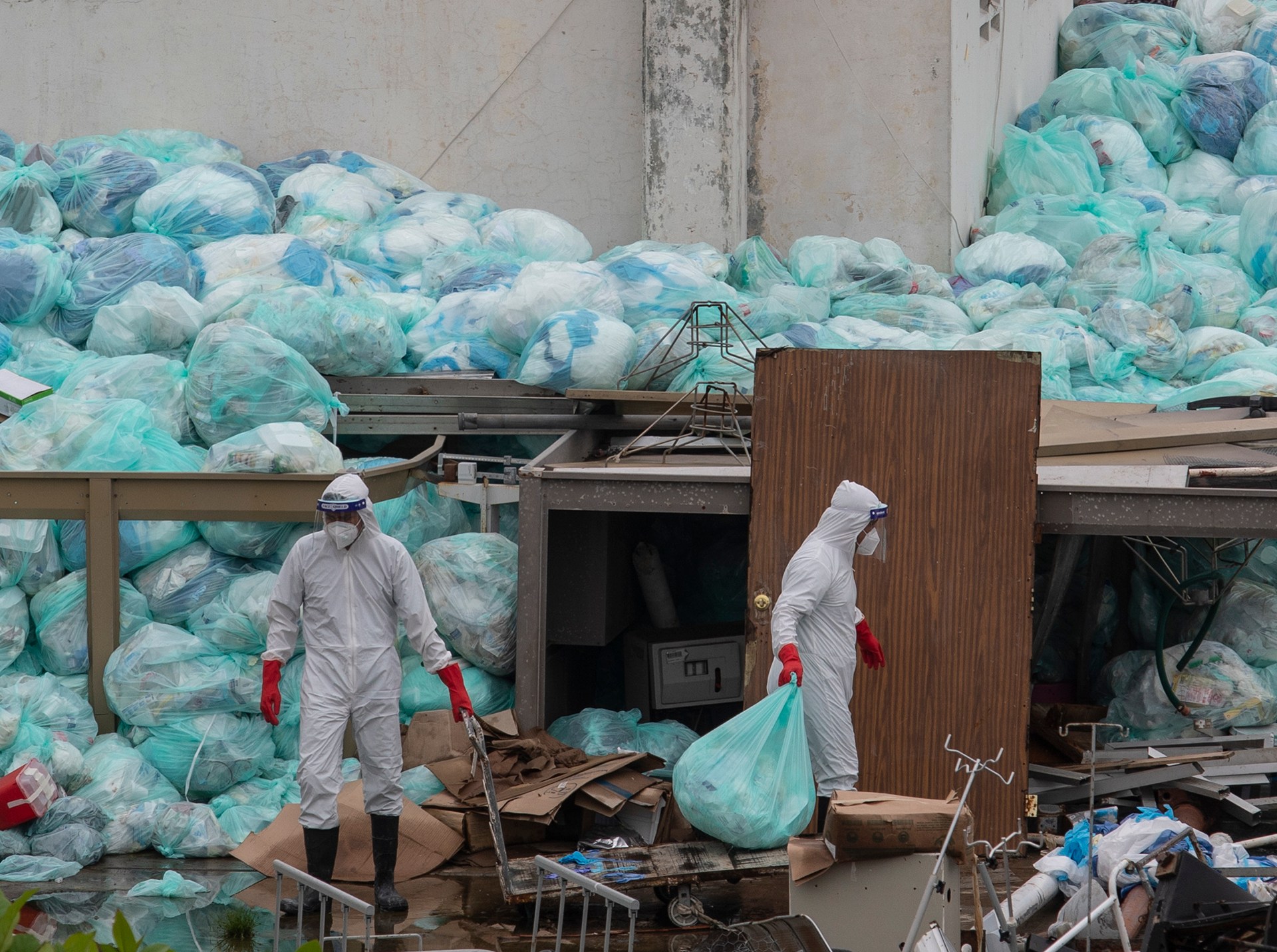Knowledge Unleashed: Understanding the Art of Medical Waste Removal for Health And Wellness Facilities
Knowledge Unleashed: Understanding the Art of Medical Waste Removal for Health And Wellness Facilities
Blog Article
Discovering Different Waste Disposal Options for a Cleaner Environment
In the quest of a cleaner atmosphere, the management of waste disposal has actually emerged as an important focal point for sustainable development. With a plethora of waste disposal alternatives readily available, varying from traditional landfill approaches to ingenious waste-to-energy technologies, the selection of exactly how we manage our waste has significant implications for our earth's well-being.
Recycling Approaches
Carrying out effective reusing techniques is important in minimizing waste and advertising sustainability in our atmosphere. Reusing includes the procedure of converting waste products right into recyclable challenge protect against unnecessary disposal. Among one of the most typical recycling approaches is material recuperation, where materials like paper, plastic, glass, and steel are accumulated, arranged, and processed to produce new items. This procedure not just preserves natural deposits but also decreases energy intake and greenhouse gas discharges connected with creating brand-new products from square one.
One more crucial recycling method is composting, which includes decaying organic waste like food scraps and backyard trimmings into nutrient-rich dirt. By including these numerous reusing techniques into our waste management practices, we can considerably reduce our ecological impact and relocate in the direction of a much more sustainable future.

Composting Techniques
Effective waste management methods, such as recycling techniques, lead the way for a cleaner setting, and currently, moving the focus to 'Composting Techniques', we check out lasting ways to decay natural waste for environmental advantage. medical waste disposal.
Composting is a natural process that transforms organic waste, like food scraps and backyard trimmings, into a nutrient-rich dirt change. The key to effective composting depends on creating the ideal balance of eco-friendly products, such as vegetables and fruit scraps, and brown products, like dried out leaves and twigs. These materials decay with the help of microorganisms, breaking down the waste right into useful garden compost.
Conventional backyard composting involves layering organic products in a container or pile and regularly transforming the mixture to aerate it. By utilizing composting strategies, we can lower the quantity of waste sent out to land fills while producing an advantageous item for enhancing soil and sustaining plant growth.
Incineration Disadvantages and pros
Incineration, as a waste disposal technique, offers both advantages and downsides that merit cautious consideration in the realm of sustainable waste management techniques. On the positive side, incineration can substantially lower the quantity of waste, decreasing the demand for landfill area and possibly lowering greenhouse gas exhausts. Incineration also permits the recuperation of power via the generation of electrical energy or warm, adding to resource recuperation. The process can be made use of to damage unsafe substances, supplying a risk-free method for dealing with particular types of waste that may posture threats to public wellness and the atmosphere if left without treatment.
Nevertheless, there are significant disadvantages to incineration. One significant issue is the possible launch of harmful pollutants right into the air, such as dioxins, hefty metals, and particle matter, which can have unfavorable effects on human health and the atmosphere. Additionally, the high first financial investment and operational prices of incineration facilities posture economic difficulties, making it a much less cost-effective choice compared to other waste administration strategies. Careful surveillance and policy are vital to reduce these adverse effects and take full advantage of the advantages of incineration as part of an extensive waste administration technique.
Landfill Monitoring Techniques
Garbage dumps play an important function in waste administration and environmental preservation by giving a control system for the disposal of solid waste products. Efficient land fill management strategies are crucial to alleviate environmental effects and guarantee the lasting sustainability of these waste disposal sites. One crucial technique is correct waste compaction to maximize making use of readily available area within the landfill (click here). By compacting the waste, the quantity is reduced, permitting for even more waste to be fit over time.
Moreover, the application of daily cover techniques is crucial in decreasing odors, stopping clutter, and minimizing the destination of bugs. Covering the disposed waste at the end of each day helps to include smells and stop prospective environmental contamination. In addition, the surveillance of landfill gas exhausts and leachate degrees is critical in ensuring that ecological criteria are fulfilled which any kind of prospective threats to bordering ecological communities are reduced.

Waste-to-Energy Technologies
One of the ingenious techniques to throw away monitoring involves using Waste-to-Energy modern technologies to convert strong waste into useful energy sources. Waste-to-Energy (WtE) technologies encompass a variety of processes that intend to extract power from waste products via thermal, chemical, or organic ways. This conversion procedure not only decreases the volume of waste that ends up in land fills yet also produces beneficial power sources such as electricity, warmth, or biofuels.
There are a number of techniques of Waste-to-Energy conversion, consisting of gasification, pyrolysis, and incineration. Incineration entails burning waste at heats to produce heat and electrical power. Gasification transforms waste right into a syngas, which can be utilized for power generation or chemical production. Pyrolysis breaks down natural products utilizing heats in the lack of oxygen, producing bio-oil, gas, and char.
Implementing Waste-to-Energy innovations can aid mitigate environmental issues related to traditional garbage disposal methods while simultaneously giving a sustainable energy resource. However, mindful consideration must be offered to discharges control and making certain the sustainability of feedstock supplies for these technologies to be absolutely advantageous for a cleaner Full Report environment.

Final Thought
To conclude, checking out various waste disposal options such as recycling, composting, incineration, garbage dump administration, and waste-to-energy modern technologies is essential for promoting a cleaner setting - click here. Each technique has its own advantages and obstacles, but by making use of a combination of these approaches, we can function in the direction of lowering the quantity of waste that finishes up in garbage dumps and eventually add to an extra sustainable future for generations ahead
With a wide variety of waste disposal alternatives available, ranging from conventional landfill techniques to cutting-edge waste-to-energy innovations, the option of how we manage our waste has far-reaching ramifications for our earth's wellness. medical waste disposal.Incineration, as a waste disposal method, presents both advantages and negative aspects that merit careful consideration in the realm of lasting waste administration techniques.Garbage dumps play a critical role in waste management and ecological preservation by giving a containment system for the disposal of strong waste materials. By condensing the waste, the quantity is minimized, allowing for even more waste to be fit over time
One of the cutting-edge methods to squander monitoring involves utilizing Waste-to-Energy innovations to convert solid waste right into useful energy sources.
Report this page